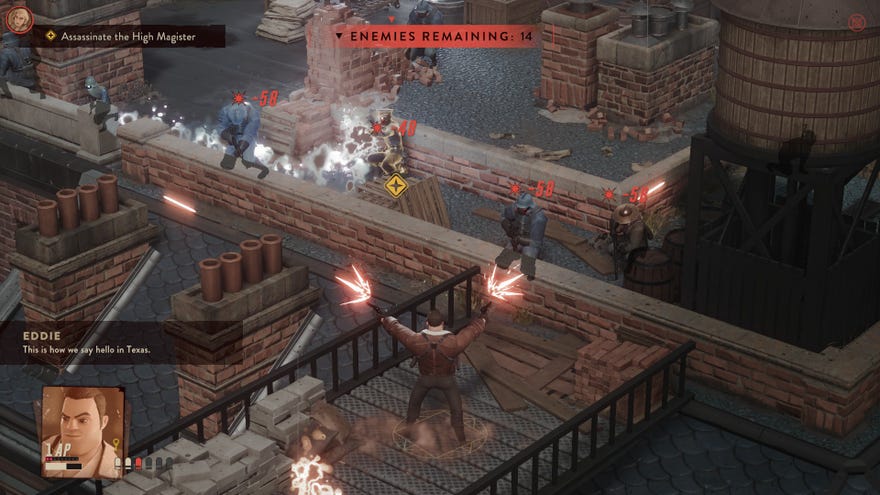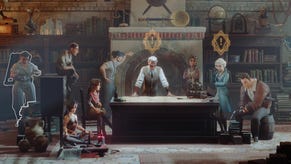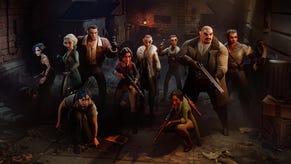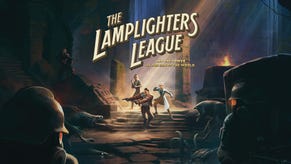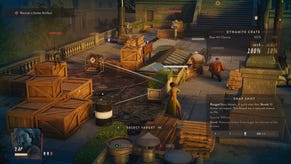The Lamplighters League review: I like you, but after a while you do my head in
Bit of a turn off
In The Lamplighters League, three evil factions are gathering the power to seize an apocalyptic tower, and you must stop them by finding and trashing their power bases. They'll grow in power the whole time, but you'll slow them by stealing and sabotaging with your team of colourful secret agents, who'll bash through gauntlets of mooks and monsters with munitions, magic, and mkicks to the stomach, mostly two action points at a time. All that makes for a colourful ride, and its 1930s setting and adventurous tone carried it for a while, but the more I played it, the more my wavering opinion turned into outright resentment. That's a damn shame, because it gets a lot right.
Comparisons to XCOM are inevitable, and for once accurate. There's a shot of Mutant Year Zero too, since its turn-based strategy backbone is dotted with real-time, uh, ribs? Ribs. You'll explore each level that way, using limited takedown moves to stealthily trim the opposition. It's much less of a puzzle than MYZ though, as you often still stand a chance anyway. This is fortunate, because enemies mingle too often to be reliably isolated, and spot bodies very often. Most monsters can't be stealthed at all, and enemy numbers soon ramp up to dozens. Real-time takedowns become too dependent on luck, and the transition is as awkward as it usually is.
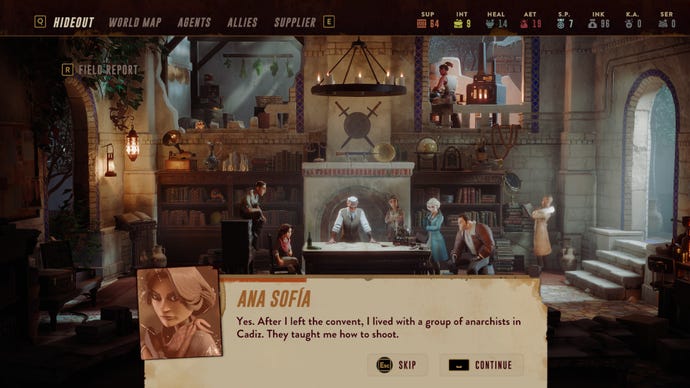
Fortunately once a fight kicks off, the core of the combat is solid and satisfying. It's more flexible than XCOM, allowing multiple attacks, and overlapping your characters' actions. Flanking bonuses and some perks encourage movement over formations (and make your inability to choose annoying), but most of all, LL is about chaining together special cooldown-based attacks. Magical monsters and sci-fi soldiers are your prime targets, each with their own immunities, quirks, and varieties of sometimes bullshit powers. By the time your (mostly) three-person teams are outnumbered six-to-one (even before the summoners and indestructible reinforcement-teleporters awaken), you'll give up on outfighting anyone to focus on gaming the cooldown system so you can fire off skills as often as possible.
Perks aid in this, but there's limited meaningful levelling choice; you'll want to unlock every character's full, unique skillset or they'll run out of combat options. Every unlock also increases damage, and with only three characters your action economy demands maximum damage output, so even weaker options are necessary to keep apace. Everyone gets equipment slots too, but they can only tweak a character's stats; the mystic will always use her staff, the medic her SMG, so you really need to figure out what they are rather than define it.
Most notable is the undrawn hand, a set of magical cards. They sort of work as another type of equipment, adding some passive perk or active power that attach to any character. You'll get a random few after each mission and either stick them to someone or melt them into resources. They can't be exchanged, only replaced or upgraded. In practice this means you'll find ones that suit you and bin the rest. While harmless, their randomness is annoying, and the stress system sometimes makes them feel like more trouble than they're worth.
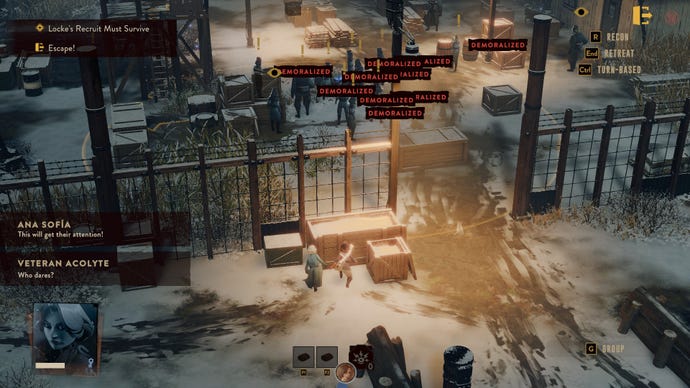
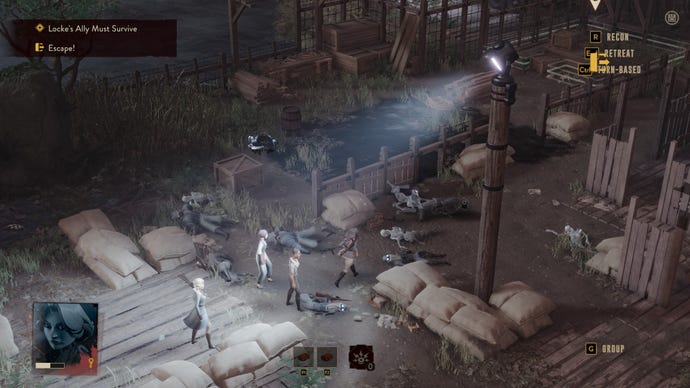

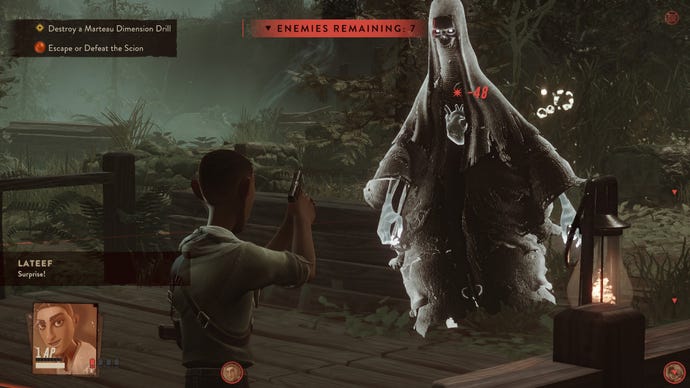
Everyone accrues stress in combat. It's basically inverse morale, so when it maxes out people panic. For enemies, this lets you instantly kill them without even spending AP, so it's extremely powerful. But for you, it removes an action point, which with so few characters can be almost as fatal. But after the mission, a "stress break" overwrites a card with random curses that vary from manageable (e.g. no crit chance) to an appalling one that raises your stress every time you're attacked, practically guaranteeing another stress break, thus more curses. You can wait them out by sending that character on a no-risk research mission to unlock things for a few turns on the world map. But it all feels a little arbitrary, and there's no meaningful strategy in the cards. It's just blind luck that you get a good one, and there's none of, say, Wildermyth's roleplaying dimension to their randomness.
Tactically, all the complication is in memorising whatever nonsense each enemy type can inflict, and whether you're already screwed because you plain don't have the AP to survive. If anything, the problem is once the numbers ramp up, you tend to have too few options but to take your three favourite characters to almost everything, and fire off their perks in the order that lets Ingrid (MVP by several miles thanks to her combined attack-moves and free AP on kills) chain her finishers. Or, if you're lucky, you'll get a map where Alexandrite can use their fire powers on a chokepoint.
Strategically, it's largely a case of opportunism as you hit whatever side job will hold back the most active faction, or decide you've ground through enough of those jobs to do the next part of a multi-stage heist. Their leaders wander the world map, making for either a bonus target or an Absolutely Not on any nearby mission. Map placement determines whether they'll be trivial, or show up at the tail end of a mission on top of 18 monsters and render it basically impossible.
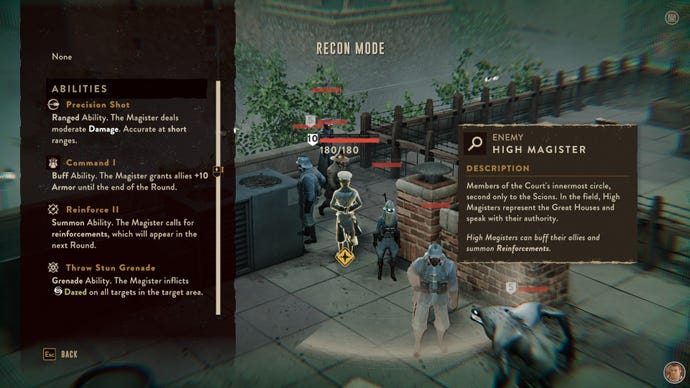
Some fundamentals are here: the movement, animations, sound, and basic satisfaction of taking enemies out are terrific, and Lamplighters's globetrotting premise really marks it out from the sea of XCOM derivatives. The maps soon repeat, but offer an excellent variety of environments from icy forests and dark rooftops to mesoamerican temples and opulent museums. And its characters' unique skills and dialogue lend them far more character than the usual po-faced generic military guys. Their chatter is infrequent and between-mission conversations brevitous so they don't overdo it, either. Even if you don't love them, they're distinctive and fun without constantly trying to tell you, like the incessantly crowing twats of Jagged Alliance 3.
But the structure is repetitive and frustratingly random. Strategy devolves into grinding through the same side missions to perk everyone up so they can endure main missions, which quickly repeat a grind of scouring the map for resources, hoping enemy placement and movement won't screw you over, and then slogging through too many enemies with very irritating attacks in a system where just one or two lost actions can doom a whole mission. It's far from a write-off, and some players will love the exact elements I hated, but I've mostly been left with mounting disappointment and frustration at a design that lets down a very likeable game.
This review is based on a review build of the game provided by publishers Paradox Interactive.
